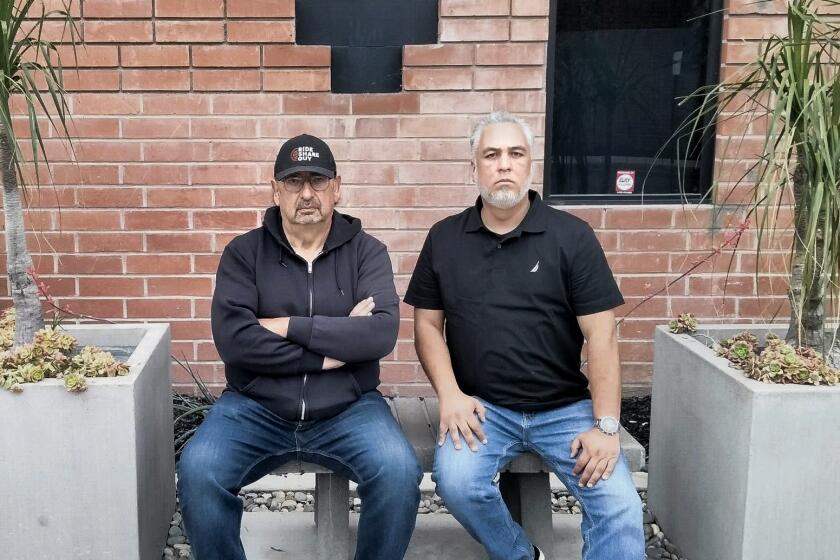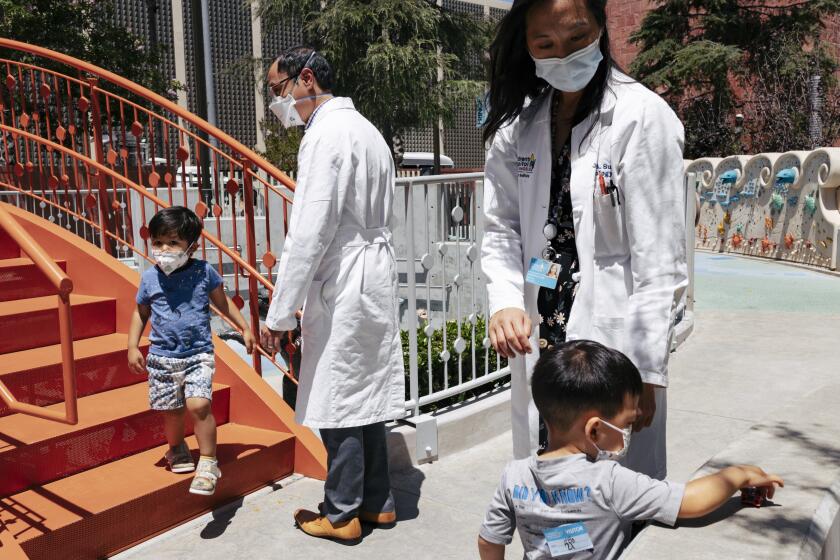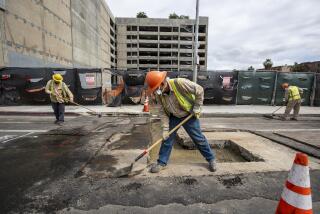Opinion: The gig economy sucked in millennials like me. Will we ever get out?

- Share via
I’m 32, and I haven’t worked a “real” (full-time) job since I was 23 and finished my two-year commitment with Teach for America. Since 2013, I’ve piecemealed together part-time jobs that include private tutor, substitute teacher, fitness instructor, story time program leader and freelance writer.
For my generation, this trajectory isn’t unusual: 45% of all freelancers are millennials, and almost half of all working millennials are freelancing. Now, with a resume that reads like a 2010s economist’s cautionary tale, I’m colliding with the problems of part-time employment as a norm.
In 2013, after two years teaching seventh-grade writing, I decided to apply for master’s programs and took on my first part-time gigs as a tutor and substitute teacher. At the time I didn’t see myself as “underemployed”— a dreaded condition that parents, economists and journalists cautioned against (and which then applied to almost 20% of millennials). I did take the LSAT and consider following my mom’s footsteps to law school. But, in line with many of my peers seeking fulfilling work, I ultimately chose to pursue my dream of being a writer. I was still on one of my parents’ health insurance thanks to Obamacare, I had saved money while living at home during my time with Teach for America, and I knew I could keep working part-time while in school full-time to get my master’s degree in creative writing.
After Uber and other gig giants failed to pay a mandated rate hike, two eagle-eyed drivers started asking questions — and won a jackpot for California gig workers.
At this point, I began teaching fitness classes in addition to tutoring. Gigging still felt normal and innocuous. I wasn’t even deterred when I got my first IRS notification that I owed the government more taxes, unaware of the costs of being self-employed. I bemoaned my quarterly payment to the IRS, but I readjusted for it. I even felt responsible when I made my first very small, tax-deductible IRA contribution (which I could only afford because I still lived at home). At 24, not having paid leave, a 401k or the stability that comes with a salary felt normal, especially among most of my friends who were also in graduate school.
But a year later, I became a primary caretaker. Gigging’s perks of flexibility and control became necessities when my mom was diagnosed with Stage 4 cancer. Working multiple part-time jobs was the only way I could care for her, stay in school and earn money. I helped her with daily tasks at home, managed her treatment schedule and attended every doctor’s appointment, chemo treatment, scan and procedure.
That was only possible because I made my own schedule. I could teach a Pure Barre class at 5 or 6 a.m. (sometimes both), take my mom to chemo for her eight-hour infusion at 8 a.m., tutor in the afternoons and complete my coursework in the evenings.
During this period I married my husband, so I moved onto his health insurance before I turned 26, making use of the benefits he received with his full-time job at a big company because I still had none. Not long after, I got pregnant. To maintain some income, I resumed tutoring just weeks after my daughter was born, but at that point postpartum I still couldn’t exercise, let alone teach a fitness class. So my two part-time jobs winnowed to one.
My siblings and I went from being successful professionals to becoming round-the-clock caregivers in our late 50s. There aren’t enough home health aides nor can most families afford to pay them a good wage.
Simultaneously, my mom’s health rapidly declined. I was sandwiched between taking care of a baby, being present for my mom and working with my students — trapped between the broken caregiving options in the U.S. Even after my mom died, and my focus shifted to my baby, it was hard to balance child care and work, especially without a grandparent regularly around to help mitigate the cost of a babysitter or fill in when one canceled. Once my daughter started preschool, that complicated our schedules with sick days, early-afternoon dismissal times, school holidays and summer break.
If my 20s were proof of our country’s unsustainable workforce model and child-care and elder-care crises, the pandemic showed how quickly those issues could upend lives. In March 2020, my daughter’s preschool closed, and I gave birth to my son. Like too many millennial women, I was forced to leave the workforce entirely to take care of them. It took more than two years before I could manage another part-time job as a freelance writer.
By then, I was too grateful for a gig to complain about the hollow foundation underpinning my work: the inconsistency, low and slow pay, instability and lack of benefits. Instead I continued to freelance, and I’ve occasionally returned to tutoring. I also found a part-time job working as the “story time lady” at my local bookstore, where I at least knew I’d get a regular paycheck, albeit a small one, every other Friday.
When I heard that a record number of Americans missed work in October over child care needs, I felt both vindicated and despondent.
Financially, I need the higher, regular pay and benefits that come with a salaried, full-time job. But it’s hard to find a good job, and if I get one, I don’t know how I’ll balance it with my responsibilities as a mom of young children in a country in which women like me often function as the social security net — the caretakers of the sick, the primary parents of the children. Even though I love my life, I wish I wasn’t working multiple part-time jobs. I wish our home life didn’t depend on my having the flexibility to deal with both small and urgent needs all the time.
Last year, 64 million people (4 million more than the year before) worked freelance in the gig economy. When 38% of our workforce is in this situation — and contributing more than $1.27 trillion in annual earnings to the economy — the country has a responsibility to make that work more sustainable. Our peer countries have done that by widely providing workers support, such as family caregiving leave, parental leave (including guaranteed paid maternity leave), pension credits for caregivers, sick leave and paid vacation; some are offering or considering income protections for self-employed workers.
On Tuesday, the Department of Labor issued a rule that companies have to treat some workers as employees, not independent contractors, based on new criteria meant to ensure people are being properly compensated. While that is a step forward, it’s not enough (and it’s likely to face lawsuits). Our country needs much bigger changes to make participating in the gig economy a viable, long-term choice instead of the all-consuming sinkhole I’m not sure I’ll ever escape.
Sarah Hunter Simanson is a Memphis-based freelance writer who received her MFA from Vermont College of Fine Arts and is working on her first novel. @sarahsimanson
More to Read
A cure for the common opinion
Get thought-provoking perspectives with our weekly newsletter.
You may occasionally receive promotional content from the Los Angeles Times.













